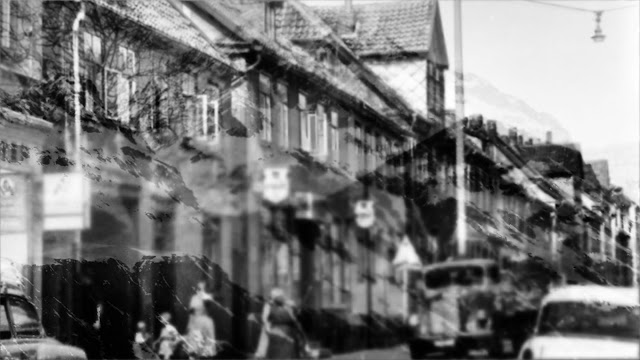Memory Theater
In many ways, the method by which we now compose and record music is very much like the editing of film. Film editing takes the linear experience of real life and rearranges the sequence of events to construct a storyline, and places things in specific contexts (“reel” life). This is much different from real-time performance, where there are no second chances, and the only option is to do it right the first time. You could film a theatrical event and later go back, rearrange the sequence of events, include a soundtrack and you’d have something completely different from the actual performance. By simply adding a sound to a visual event you can change its meaning. Placing one event before another changes the viewer's interpretation of the moment. And in music, making recordings gives us the illusion of things taking place in one moment, but in fact could have taken place days, weeks or even years apart.
In the mid to late 1960s, recording technology grew exponentially. When the Beatles started experimenting in the studio with the new 4-track machines and studio effects they suddenly had the ability to simulate environments and contexts in lots of creative ways. At the time this was seen as a solution to the problems associated with live performance (the primary one being the inability to be heard over screaming teenage girls, and secondarily the wealth of creative possibilities in the recording studio “vacuum”). With the expertise of composer/producer George Martin, who introduced the Beatles to the world of experimental music, they now had the option of playing with tape and effects, which had many similarities with the editing of film.
So with Memory Theater, I wanted to apply this metaphor to music. Being a big fan of David Lynch, I am interested in how film and the dream-state inform each other, and how they might perhaps simulate reality.
Memories and dreams are like edited films, although the “editing” that the brain does seem purely random--although there may be times when events are more than a mere coincidence. Most of us dream in fragments, and when we awake, assemble the fragments into a meaningful narrative, connecting the dots into an identifiable shape. We see them as a sign of something that might happen to us in our lives, and in many instances they in fact do.
It’s also a bit like an “optical illusion” where the brain perceives something that is not inherently there but becomes an emergent property of simultaneous, overlapping events.
If you are familiar with the geometric paintings of Piet Mondrian (Red, Yellow and Blue, 1921), you have noticed that where lines intersect, you see dots. As the eye and brain process the lines, this effect is automatically created by the brain.
Similarly with “Memory Theater” the random contexts (lines) create a narrative (dots), and contrives a story, even though there really is no “story” per se.
Much of what we try to perceive in life is based on implication: “What are you getting at?”, “What are you saying to me?” “What does that mean?”
THE TREATMENT
"Characters"
Dalila Shades
Barbara Shades
Robert Barnard
Thomas Troy
Sargeant Jim Sunday
Parthenope, the palm reader
Circe
Cosme
The "dream": Ulysses and the Sirens
As the mariners approached the Sirens' island, the sea was calm, and over the waters came notes of music so ravishing and attractive that Ulysses struggled to get loose and, by cries and signs to his people, begged to be released; but they, obedient to his previous orders, sprang forward and bound him still faster. They held on their course, and the music grew fainter till it ceased to be heard when with joy Ulysses gave his companions the signal to unseal their ears; and they relieved him from his bonds. It is said that one of the Sirens, Parthenope, in grief at the escape of Ulysses drowned herself.
Possible film treatment/narrative:
Dalila Shades is the once strong and feisty daughter of the director Robert Barnard. She sits contemplatively in the café on Farrington Road and watches the burning car, thinking it’s the vehicle used as the getaway car, and thinking about how confused she is about Sunday. It’s now almost Christmas, almost three years after the incident at the nightclub. This is the car that Jim Sunday had been looking for.
She explains the influence her father had on Sunday who was later to become known as Mr. Eternity. A photo of Tom Troy appears. It was Sunday's sermon ‘Echoes of Eternity’ which supposedly converted Circe to Christianity in the 1930s. It was after this sermon that Circe took a piece of chalk from her pocket and wrote in beautiful script, the word "Sanbah", on the sidewalks of L.A. which would influence many for the next four decades.
The image of Parthenope appears as Troy walks away from the Harbour Bridge wearing a dark coat and depression era hat. 1920s Archival footage of two female swimmers seen from overhead lay on a cliff face. The turbulent sea hits the cliff as the sea runs over their bodies. Sunday’s poetic sermon booms loudly as the sea returns to hit the cliff face as the swimmers hold on tightly.
(2002)




Comments
Post a Comment